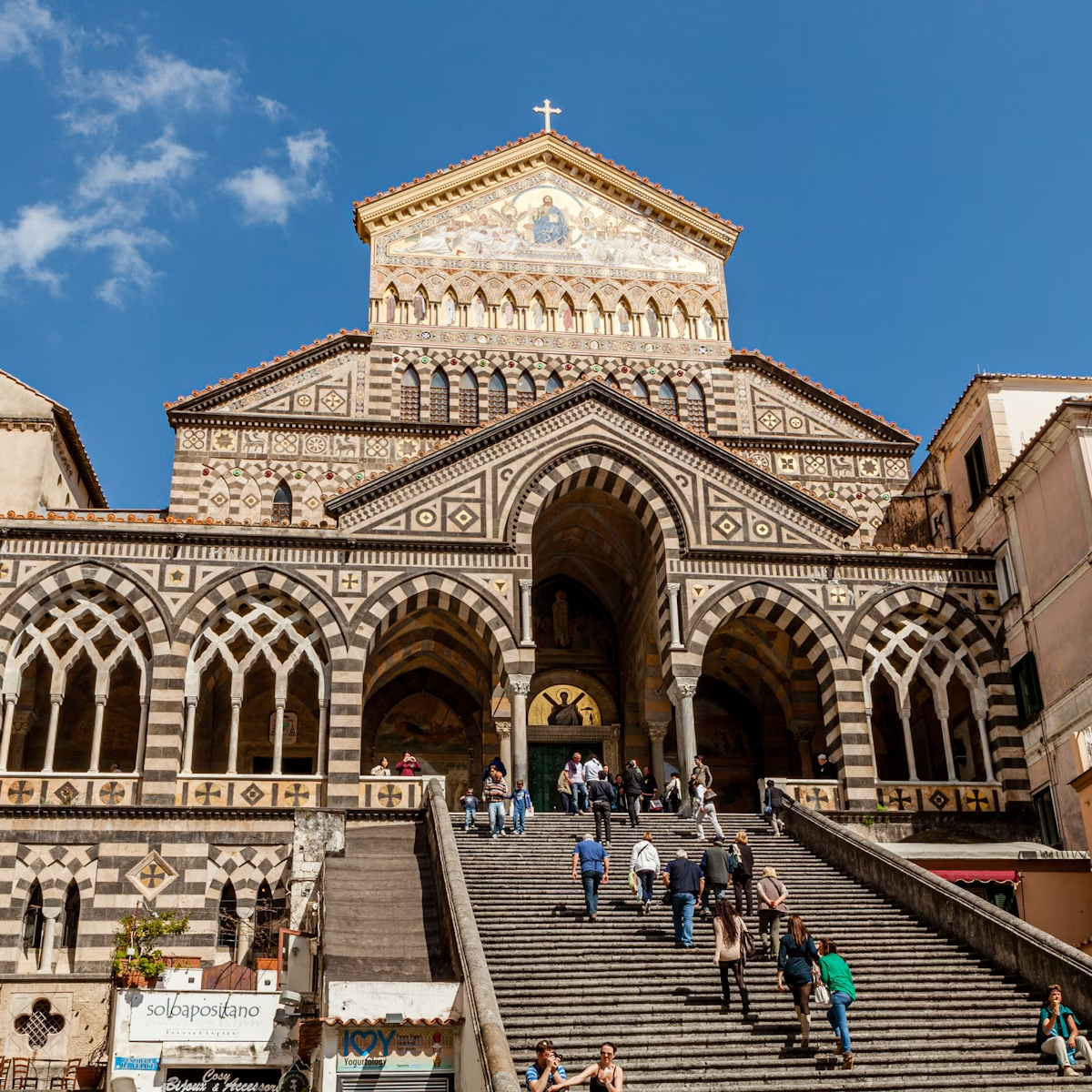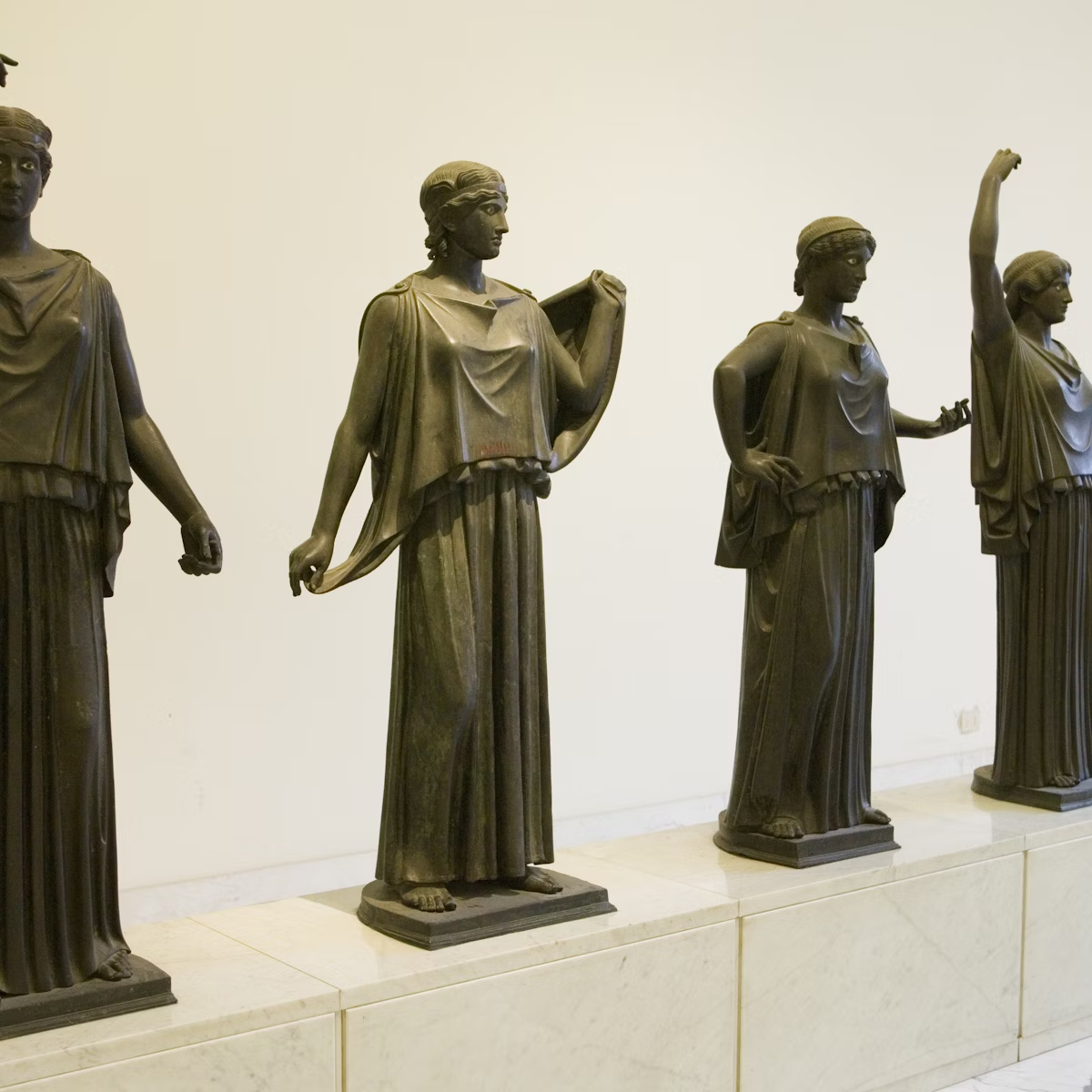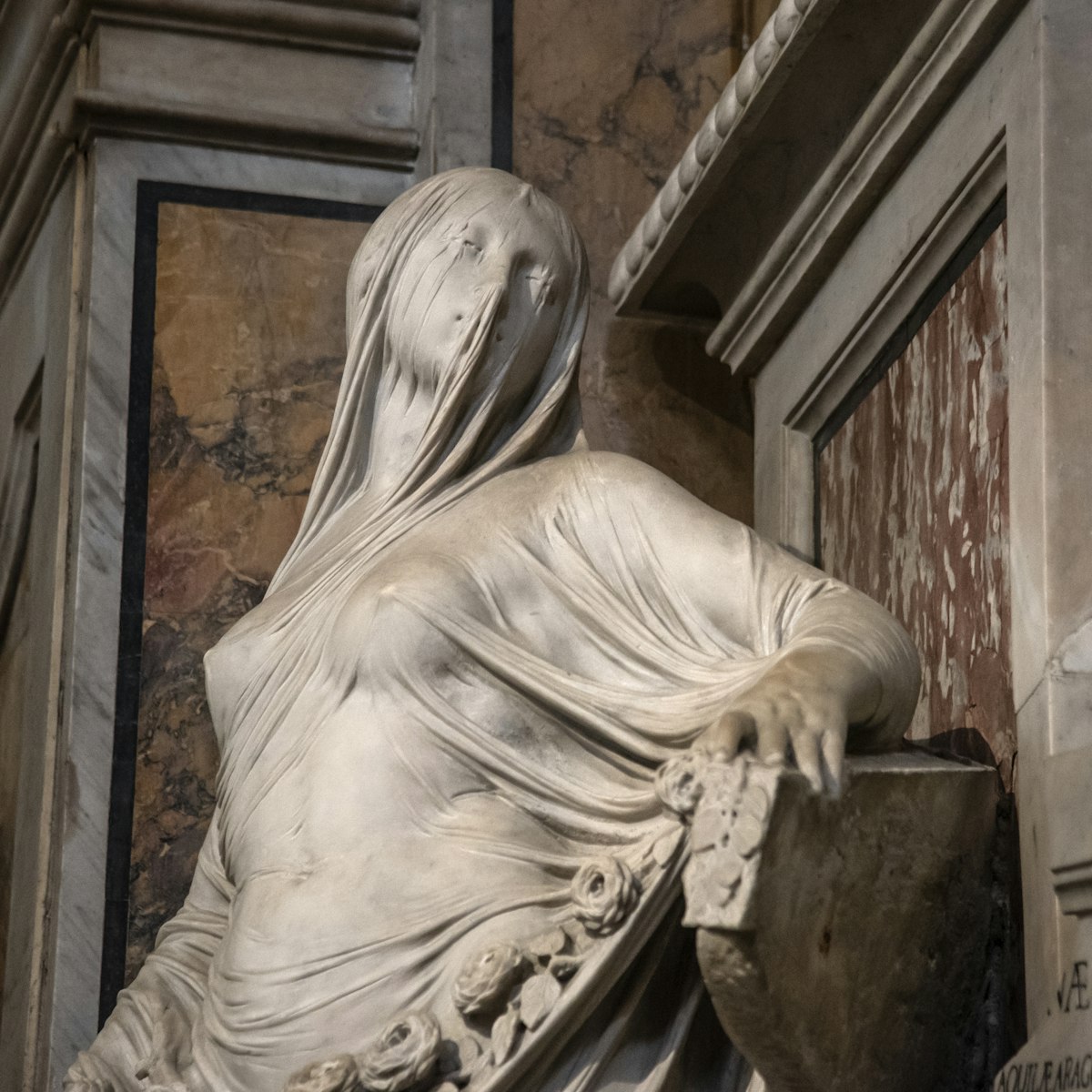The most engrossing site at this 14th-century religious complex is its infamous ruota (wheel), set in the orphanage wall to the left of the basilica. As late as the 1980s, unwanted children were placed in a hollow in the wheel. On the other side of the wall sat a nun ready to take the baby, wash it in the adjacent basin and record its time of entry. Older children were sometimes forced into it, subjecting them to serious injury.
The basilica itself was significantly restructured by Luigi Vanvitelli and his son Carlo after a devastating fire in 1757 (the soaring 67m-high cupola is one of their additions). Luckily, the 1580 sacristy (to the right of the nave) survived the blaze. Here, exquisitely carved wooden armoires by Girolamo D'Auria and Salvatore Caccavello depict New Testament scenes, while vault frescoes by Belisario Corenzio take care of Old Testament tales. If the sacristy is closed, seek out the sacristan and politely request to see it.
Another fire survivor is the wooden mamma chiatta (chubby mother), a sculpture of the Virgin Mary in the third chapel to the left of the nave. Its image was once reproduced on the leaden medals worn by the children left at the former orphanage.
Hidden beneath the church is Carlo Vanvitelli's extraordinary, round, vaulted crypt, complete with six altars. The main altar features a statue of Madonna and Child by Domenico Gagini, set against stucco work by Giuseppe Sanmartino, creator of the incredible Cristo Velato inside the Cappella Sansevero. The crypt is usually closed to visitors, though sweet talkers may be able to convince the custodian to let them take a quick peek (for a tip).







